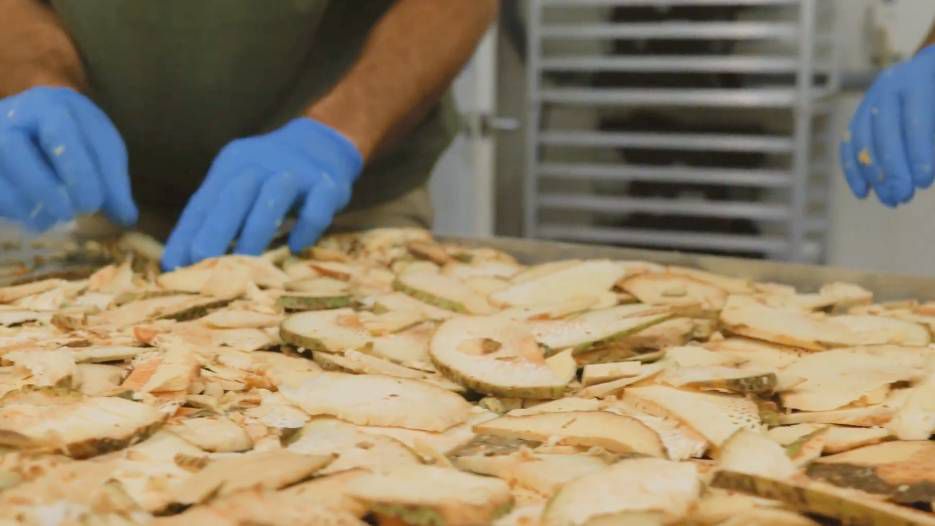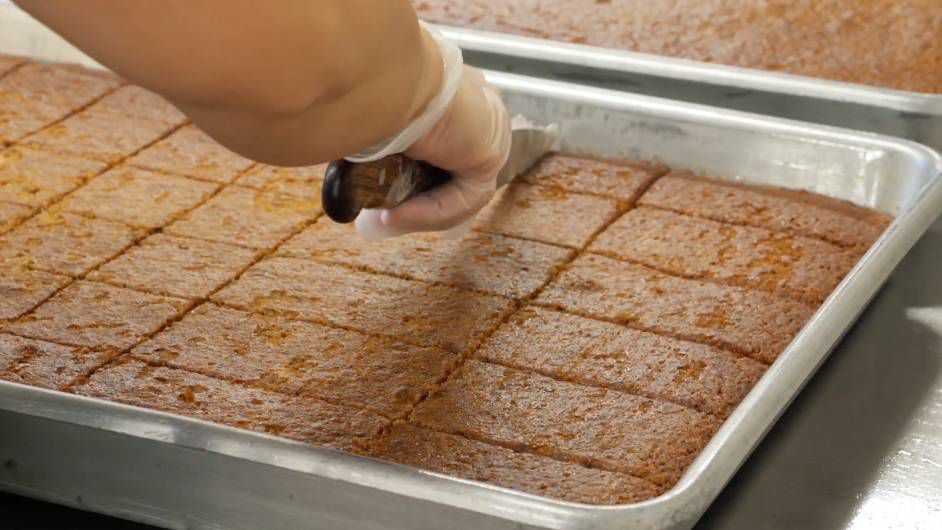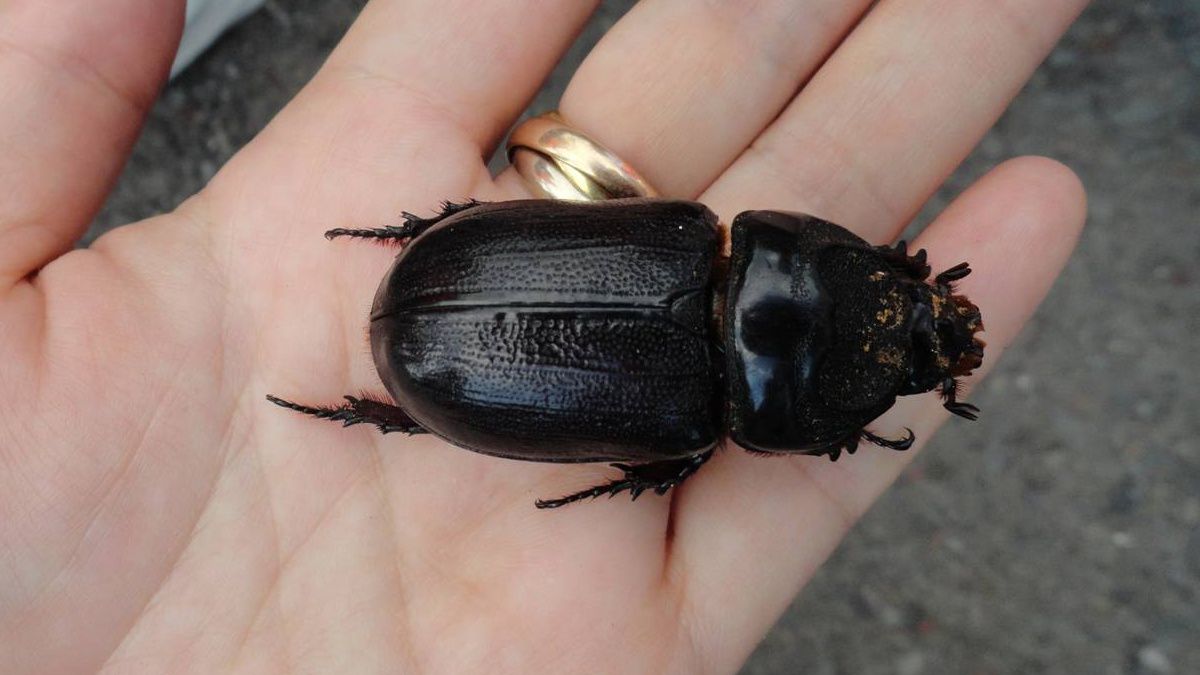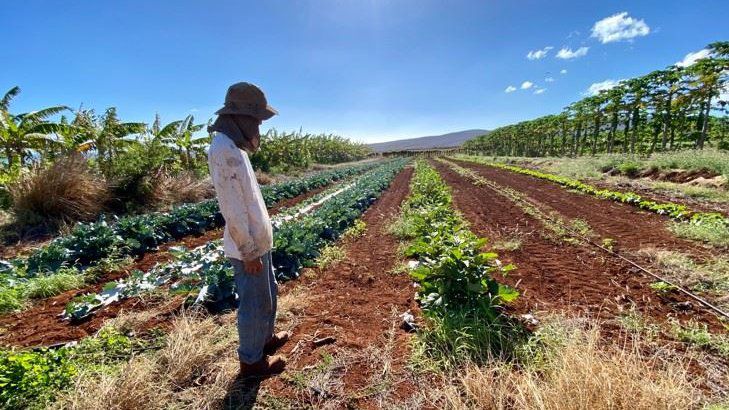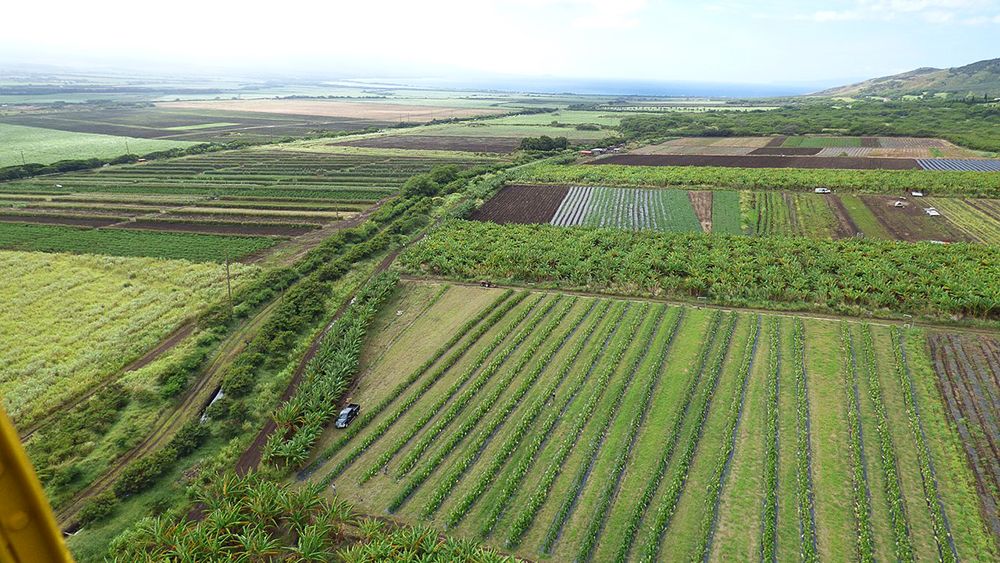Throughout the month of April, the Hawaii State Department of Education brought ʻulu (breadfruit) to students in participating public schools for the first time since 2018.
ʻUlu grown by local farmers was processed to make an estimated 240 pounds of flour supplied by the Hawaiʻi ʻUlu Cooperative. Using an ʻulu banana bread recipe developed and finalized by Kaiser High School’s Food Services Manager Christian Lee-Tomita and baker Edison Ching, cafeteria staff across 90 schools combined the flour with local bananas, as available, to bake ʻulu banana bread for breakfast, serving 11,000 students.
“ʻUlu was on the school menu from about 2018 until the pandemic, and it was used in its steamed and frozen form. So the schools were using it in a wrap (local-style kalua pork burrito) and then in beef stew,” said Hawaiʻi ʻUlu Cooperative CEO Dana Shapiro in a release. “But this is the first time that ʻulu is being served through the flour form and the neat thing about flour is that you can use the off-grade fruit, and it's a dried product, so it's truly shelf-stable. It's available all year round. You don't need refrigeration or freezers to store it.”
The feedback from students at Helemano Elementary was positive. “It was good. Like, it was the best banana bread I ever had in my life,” said 5th grader Dallas Agricula. “It’s chewy, it has a lot of flavor, and it tastes a lot like banana.”

Another 5th grader, Thomas Simer, agreed. “It tasted like regular banana bread. And it’s sweet. And it’s also good. This is my first time having ʻulu banana bread.”
Chantelle Evangelista, a parent of a child attending the school, also chimed in: “Honestly, I don’t even taste the difference in the banana bread. It’s pretty good. I like it. Especially being in Hawaii, it’s hard to get stuff here, so locally grown fruits and vegetables — it’ll be a plus and it’ll keep the farmers in business too.”
To enhance food sustainability throughout the state, HIDOE is focused on improving the health of students while supporting local farmers — and is looking to see how ʻulu flour can be incorporated as a regular ingredient for future school meals. The effort is part of the department’s farm-to-school initiative that began in 2015 and aligns with Act 175.
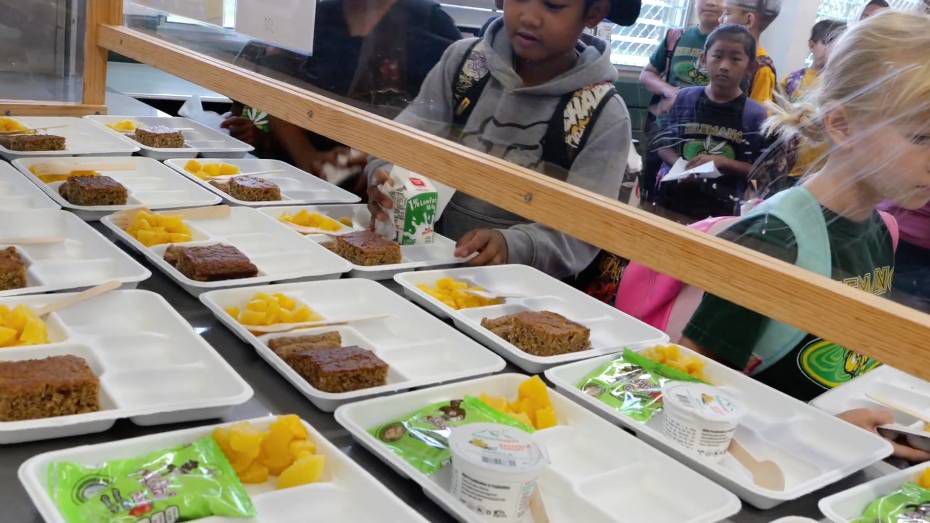
“There’s a lot of students that came today — first timers — and a lot of parents that came too,” said Helemano Elementary School Food Services Manager Devie Nakamura. “It tastes really good; it’s very moist. It’s a good recipe that we’re using and I’m so happy we get to support our local farmers.”
One tree produces about 450 pounds of fruit each growing season. ʻUlu is also a powerhouse of nutrition — it’s naturally gluten-free, low-fat and contains essential amino acids; fiber; vitamins A, B and C; as well as phosphorus and iron.
“ʻUlu flour can substitute for all-purpose wheat flour. It's much more nutritious. It has about three times as much fiber as all-purpose wheat flour,” said Shapiro. “ʻUlu itself can also substitute for potatoes, which are mostly imported. We import about 25 million pounds of potatoes to Hawaii every year, so ʻulu can be substituted for anything you make potatoes with. You can just sub in ʻulu and it's super easy.”
Hawaii public schools are the state’s largest institutional consumer of food products, according to HIDOE, serving over 100,000 student meal each day.
“We would love to see ʻulu on the regular school breakfast and lunch menu all year-round,” said Shapiro. “Our co-op farmers have planted about 7,000 trees over the last 10 years so I think it will be possible for the schools to incorporate ʻulu into the menus in a significant way more and more every year as farmer supply increases. And I hope to see more innovative uses of ʻulu so that the kids can try it in new ways, learn and get inspired for how they might cook with ʻulu, or create other products out of ʻulu in the future.”
